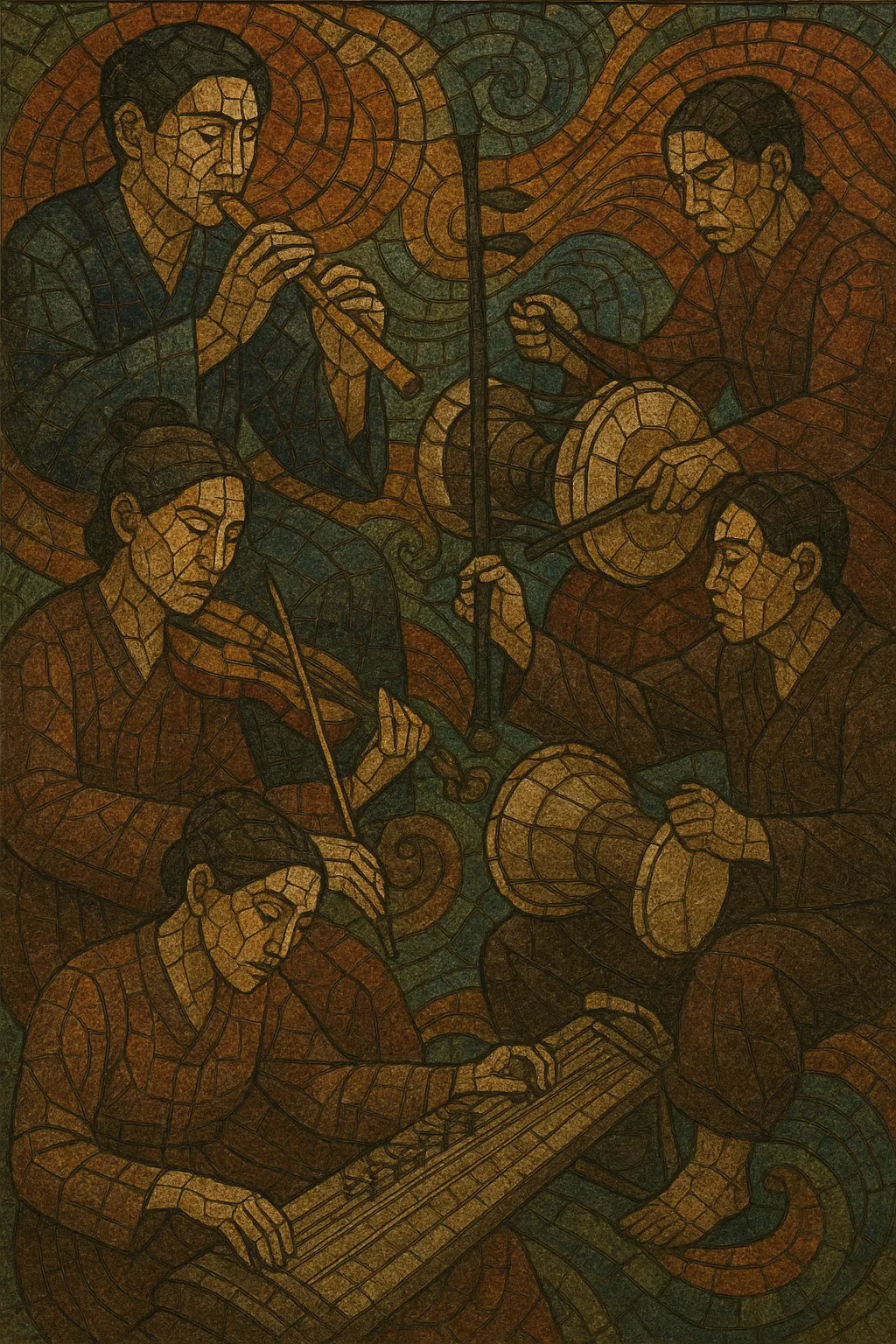Sinawi is a traditional Korean shamanic ensemble music characterized by collective, improvised heterophony over recurring cyclical rhythms (jangdan). Originating in late Joseon–era ritual contexts, it accompanies gut (shamanic rites) and dance, moving from slow, meditative sections to ecstatic, fast passages.
Typical ensembles combine melodic instruments such as daegeum (bamboo transverse flute), piri (double-reed), haegeum (two-string fiddle), and gayageum/geomungo (zithers) with percussion like janggu (hourglass drum) and buk (barrel drum). Melodies draw on Korean modal systems (jo), especially gyemyeon-jo and ujo, with rich ornamentation, flexible intonation, and interlocking variations among players.
Sinawi’s hallmark is spontaneous, conversational interplay: each performer elaborates the core tune while listening and responding to others, creating a living tapestry that can shift from solemn trance to vigorous release.
Sinawi emerged during the late Joseon period (19th century) as an ensemble practice within Korean shamanic rites (gut). It served as both accompaniment to trance-dance and as sonic mediation between human and spirit realms. The music’s cyclic rhythms (jangdan) and modal vocabulary were shared across folk and ritual traditions, but sinawi emphasized group improvisation and heterophony, distinguishing it from court-based repertories.
By the early 20th century, regional variants (including Honam/Namdo styles) consolidated the ensemble core of daegeum, piri, haegeum, and percussion. Performances typically unfold from slow, weighty jinyangjo to medium jungmori and brisk gutgeori or faster cycles, mirroring the dramaturgy of the rite. Players ornament a common melodic outline with grace notes, slides, and timbral inflections, continually negotiating balance and intensity.
In the mid– to late–20th century, sinawi entered concert stages and conservatories via preservation efforts and institutional ensembles. Its improvisational ethos inspired the creation of sanjo (a virtuosic solo genre with percussion) and continues to inform fusion gugak projects and contemporary improvisers. Today, sinawi appears in ritual, educational, and performance settings, retaining its ritual DNA while engaging in cross-genre collaborations.


